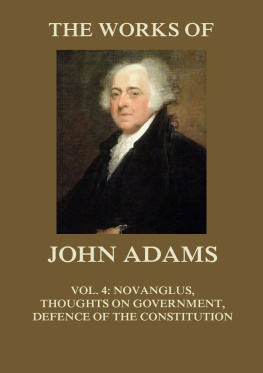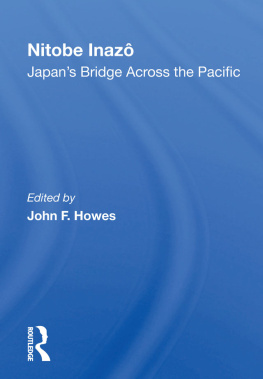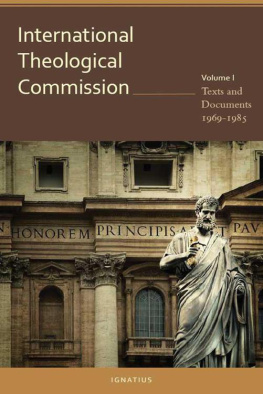ASIAN LAW SERIES
SCHOOL OF LAW
UNIVERSITY OF WASHINGTON Number 7
Asian Law Series
School of Law
University of Washington
The Asian Law Series was initiated with the cooperation of the University of Washington Press and the Institute for Comparative and Foreign Area Studies in 1969 in order to publish the results of several projects under way in Japanese, Chinese, and Korean law. The members of the editorial committee are: Herbert J. Ellison, Director of the Institute for Comparative and Foreign Area Studies; John O. Haley; and Dan Fenno Henderson, chairman.
1. The Constitution of Japan: Its First Twenty Years, 194767, edited by Dan Fenno Henderson
2. Village Contracts in Tokugawa Japan, by Dan Fenno Henderson
3. Chinese Family Law and Social Change in Historic and Comparative Perspective, edited by David C. Buxbaum
4. Law and Politics in Chinas Foreign Trade, edited by Victor H. Li
5. Patent and Know-how Licensing in Japan and the United States, edited by Teruo Doi and Warren L. Shattuck
6. The Constitutional Case Law of Japan: Selected Supreme Court Decisions, 196170, by Hiroshi Itoh and Lawrence Ward Beer
7. Japans Commission on the Constitution: The Final Report, translated and edited by John M. Maki
Copyright 1980 by the University of Washington Press
Printed in the United States of America
This book was published with the assistance of grants from the National Endowment for the Humanities and the Japan Foundation.
All rights reserved. No portion of this publication may be reproduced or transmitted in any form or by any means, electronic or mechanical, including photocopy, recording, or any information storage or retrieval system, without permission in writing from the publisher.
Library of Congress Cataloging in Publication Data
Japan. Kemp Chsakai.
Japans Commission on the Constitution, the final report.
(Asian law series ; no. 7)
Selected translation of Kemp Chsakai hkokusho.
Bibliography: p.
Includes index.
1. JapanConstitutional law. 2 Japan
Constitutional history. I. Maki, John McGilvrey,
1909 II. Title. III. Series.
LAW 342.52024 80-50869
ISBN 0-295-95767-0
Preface
I FIRST LEARNED of Japans Commission on the Constitution and its work in 195859 when I was in Japan as the fortunate recipient of a Fulbright research professorship. I was engaged in research on the Japanese Supreme Courts constitutional decisions, and that led me automatically in the direction of the commission, which was then in the initial stages of its operations. Early in 1959 I had the opportunity to hear Professor Takayanagi Kenz, its chairman, deliver a fascinating report on his recent discussion with General Douglas MacArthur on the origins of the Constitution. I concluded that any operation under the guidance of a man with the obvious wisdom and intellectual stature of Takayanagi-sensei was well worth serious attention.
For the next four years I followed the work of the commission, primarily through its published documents, with a mounting sense of excitement as the nature of its contributions became more and more apparent through the breadth of its consideration of virtually all conceivable constitution-related problems and the depth of its analysis of fundamental constitutional issues. In the summer of 1963 I was able to return to Japan when the commission was in the stage of drafting its reports, and to confer with Professor Takayanagi and members of his staff. It was already abundantly clear that the planned final report of the commission would be a major contribution to constitutional studies in Japan.
My reading of the final report after its publication in the early summer of 1964 convinced me that it should be translated and made available to an audience outside Japan broader than the tiny handful of those non-Japanese who are capable of reading the language. Circumstances prevented me from beginning the task, however, until the summer of 1970. After I had virtually completed a rough first draft, a new set of circumstances forced still another delay of several years, and it was not until 1976 that I was able to complete the first draft.
The most visible problem connected with the translation is the sheer bulk of the original. Obviously a complete translation of the nearly 900 pages was out of the question. In these days of soaring publication costs, there could be no possible economic justification for a complete translation. I concluded that, even so, the first step in the translation should be a complete, though rough, first draft. Such a draft, I believed, would provide a sounder basis for a final version than would a running, selective translation. The rough draft ran to a little more than 900 pages of typescript.
Then followed the process of abbreviation. Fortunately, the original was organized in a fairly rigid mechanical manner, suitable for an objective, factual report, resulting in a fair amount of repetition that could be eliminated without confusing or misleading the reader. I also decided to eliminate some sixty pages of text dealing with the opinions of foreign scholars on the Constitution. Fortunately, the commission had already published a separate volume containing these opinions in the original languages. I also eliminated the brief and repetitive introduction.
Because of their essentially narrative nature, it was impossible to reduce substantially the first three parts of the report. To do so would have eliminated a great deal of essential information. The long fourth part, therefore, amounting to more than 500 pages, became the target of substantial reduction. Part Four contains the opinions of the commissioners which were set forth in considerable detail, frequently verbatim. The reduction was achieved by the following devices: the retention of only those opinions that best exemplified the opposing views on each issue; the condensation of some opinions without attribution by name where it was possible to reduce them to general statements; and the retention of the original statement of opinion verbatim only in those cases where the opinions were apt illustrations of the general arguments put forth or were of intrinsic interest.
It was also possible to reduce by approximately one-half the final chapter of the report, The Need for Constitutional Revision. The highly mechanical organization of this chapter resulted in a considerable amount of repetition, which made reduction a simple process. The gist of the arguments for and against revision was retained, even though considerable changes were made in the structure of the chapter itself.
Additional reduction in length was achieved through the omission of many hundreds of page references to the other commission reports on which this report was based. Omission of these references obviously creates no problems for the reader who does not read Japanese. Readers of Japanese can simply refer to the original. The latter will suffer some slight inconvenience in tracking down references because of the omission of some quotations from the original.
The only additions I have made to the original are the Appendix, the thumbnail biographical sketches of the commissioners and a brief bibliography. There was no real need in the original for the biographical material, but it does provide a minimum of information on those commissioners whose opinions might be regarded as particularly thought-provoking. The bibliography contains only a listing of the publications of the commission and of works cited in this translation.











